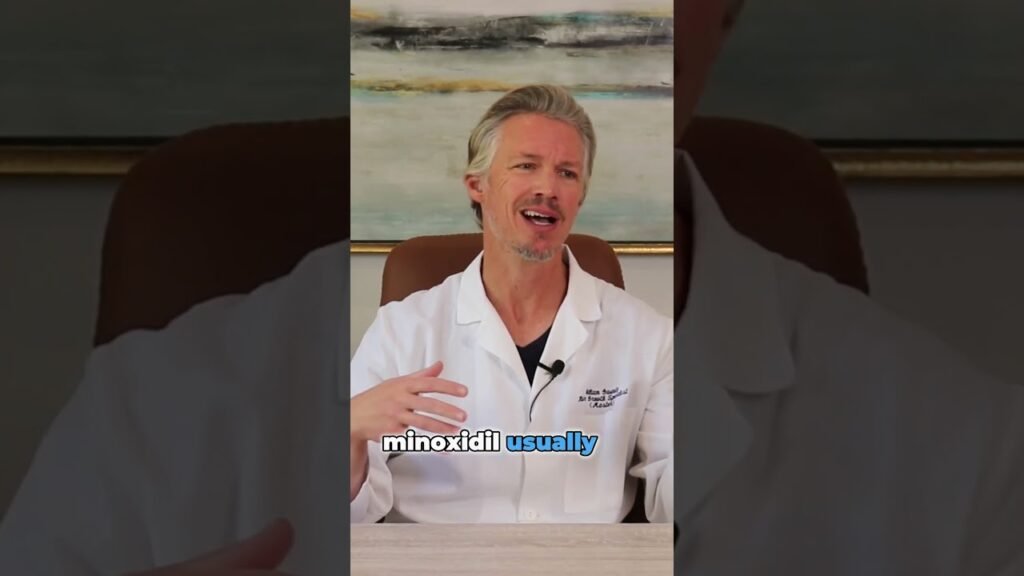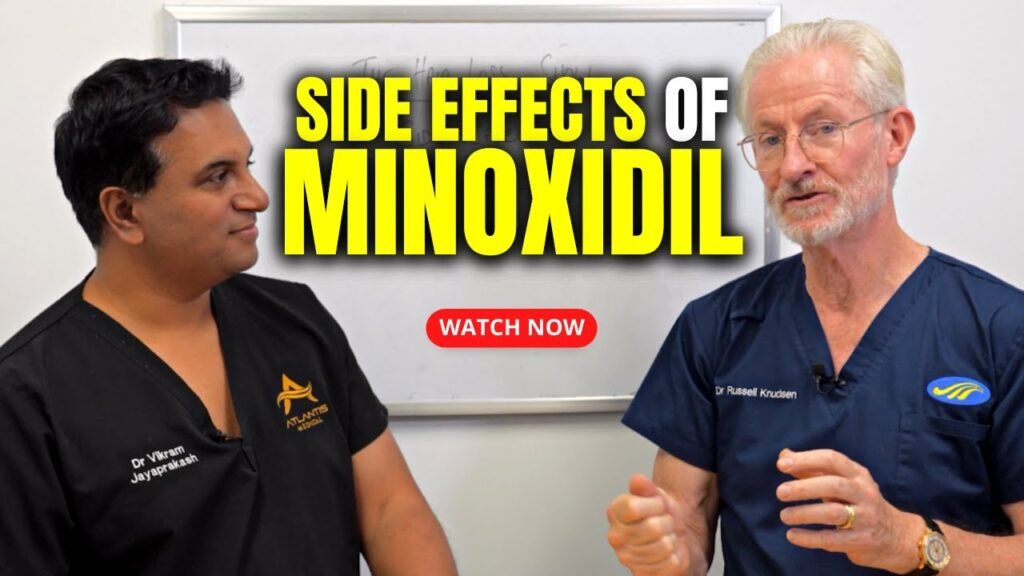Understanding Minoxidil: What It Is and How It Works
Minoxidil is a popular topical medication primarily used to treat hair loss. Originally developed as an oral medication for high blood pressure, researchers discovered its potential for promoting hair growth when patients reported increased hair density as a side effect. This revelation led to the development of topical minoxidil, which has since become a go-to solution for those experiencing androgenetic alopecia, also known as male or female pattern baldness. Minoxidil is available in various concentrations, with 2% and 5% solutions being the most common.
How Minoxidil Works
The exact mechanism by which minoxidil stimulates hair growth is not fully understood, but several theories provide insight into its effectiveness. Minoxidil is believed to widen blood vessels and improve blood flow to the hair follicles. This enhanced circulation delivers more oxygen and nutrients to the follicles, potentially revitalizing shrunken hair follicles and prolonging the anagen phase of hair growth. As a result, users may notice thicker, fuller hair over time.
Key Points:
- Minoxidil may increase the size of hair follicles, allowing them to produce thicker strands of hair.
- It can extend the growth phase of hair, resulting in more prolonged and robust hair growth cycles.
Despite its benefits, minoxidil is not a miracle cure. It requires consistent application, typically twice daily, and results may take several months to become noticeable. Moreover, its effectiveness can vary from person to person, with some experiencing more significant hair regrowth than others. Its also important to note that discontinuing use may result in the resumption of hair loss. Therefore, understanding how minoxidil works and maintaining a consistent regimen is crucial for those seeking to manage hair thinning effectively.
Common Side Effects of Minoxidil You Should Know
When considering the use of Minoxidil for hair growth, its important to be aware of the potential side effects that some users may experience. While many individuals find success with this treatment, understanding the possible adverse effects can help you make an informed decision. One of the most frequently reported side effects is scalp irritation. This can manifest as itching, redness, or dryness of the scalp. If you notice persistent irritation, it may be beneficial to consult with a healthcare provider to discuss alternative solutions or adjustments to your regimen.
Increased Hair Shedding
Another common side effect to be aware of is an initial increase in hair shedding. This can be alarming for new users, but its often a temporary phase that occurs as the hair follicles make way for new growth. This process is known as «shedding» and typically resolves within a few weeks. If excessive shedding continues beyond this period, it may be advisable to seek medical advice to ensure that the treatment is working effectively and not causing harm.
Other Notable Side Effects
In addition to scalp irritation and increased shedding, some users may experience unwanted facial hair growth. This is particularly common in women using Minoxidil. While this side effect is not dangerous, it can be distressing. If you notice such changes, you may need to adjust the dosage or application method. Other less common side effects include dizziness, headaches, and changes in hair color or texture. Its essential to monitor any changes closely and report them to your healthcare provider to ensure the safe use of Minoxidil.
Expert Advice on Managing Minoxidil Side Effects
When using minoxidil for hair growth, its essential to be aware of potential side effects and how to manage them effectively. Experts recommend starting with a lower concentration, such as 2% for women and 5% for men, to assess how your body reacts before moving to a higher dose if needed. This gradual approach can help minimize the likelihood of experiencing adverse effects such as scalp irritation, itching, or redness.
Identifying Common Side Effects
Some of the most common side effects associated with minoxidil use include dryness, flaking, and irritation of the scalp. To address these issues, dermatologists often suggest incorporating a gentle, hydrating shampoo and conditioner into your hair care routine. Products containing soothing ingredients like aloe vera or chamomile can provide relief and help maintain scalp health.
Consulting a Dermatologist
For those experiencing persistent or severe side effects, consulting with a dermatologist is crucial. Dermatologists can offer tailored advice and may recommend alternative treatments or additional topical therapies to alleviate discomfort. They can also assess whether minoxidil is the most suitable option for your hair loss concerns, potentially suggesting other treatments that align better with your skin type and health profile.
When to Consult a Doctor About Minoxidil Side Effects
Understanding when to consult a doctor about Minoxidil side effects is crucial for anyone using this popular hair regrowth treatment. While Minoxidil is generally safe, some users may experience adverse reactions that require medical attention. Common side effects, such as mild scalp irritation or dryness, can often be managed with over-the-counter remedies or changes in application techniques. However, if these symptoms persist or worsen, its advisable to seek professional guidance to prevent further complications.
Severe Side Effects
Certain side effects are more serious and necessitate immediate medical consultation. If you experience chest pain, rapid heartbeat, dizziness, or fainting, these could be signs of a more severe reaction to Minoxidil. Additionally, if you notice swelling of the hands or feet, sudden weight gain, or difficulty breathing, it is important to contact a healthcare provider as these symptoms could indicate a rare but serious allergic reaction or cardiovascular issue.
Allergic Reactions
Allergic reactions to Minoxidil are uncommon but can occur. Symptoms like itching, rash, or hives should not be ignored, especially if they spread beyond the scalp. If you experience any facial swelling or difficulty swallowing, it is essential to seek emergency medical help. Allergic reactions can escalate quickly, and timely intervention is critical to ensure your safety and well-being. Always inform your doctor about any existing allergies before starting Minoxidil to mitigate potential risks.
Frequently Asked Questions About Minoxidil Side Effects
Minoxidil is a popular treatment for hair loss, but many users have questions about its side effects. Below, we address some of the most common inquiries to help you understand what to expect when using this medication.
What are the common side effects of Minoxidil?
Minoxidil is generally well-tolerated, but some users may experience side effects. The most frequently reported include scalp irritation, dryness, and itching. These symptoms are usually mild and tend to diminish with continued use. However, if you notice persistent discomfort, it may be beneficial to consult with a healthcare professional.
Can Minoxidil cause unwanted hair growth?
Unwanted hair growth is a possible side effect of Minoxidil, known as hypertrichosis. This can occur in areas other than the scalp, such as the face or body. The likelihood of experiencing this side effect can depend on the concentration of Minoxidil used and individual sensitivity. If you notice excessive hair growth in undesired areas, consider discussing alternative treatments with your doctor.
Is it normal to experience shedding when starting Minoxidil?
Yes, experiencing hair shedding initially is a common concern among new users. This shedding phase is often temporary and is a sign that Minoxidil is working to stimulate new hair growth. The old hairs are pushed out to make way for healthier, stronger strands. If shedding continues beyond the initial weeks of use, it may be wise to seek medical advice to ensure the treatment is suitable for you.


